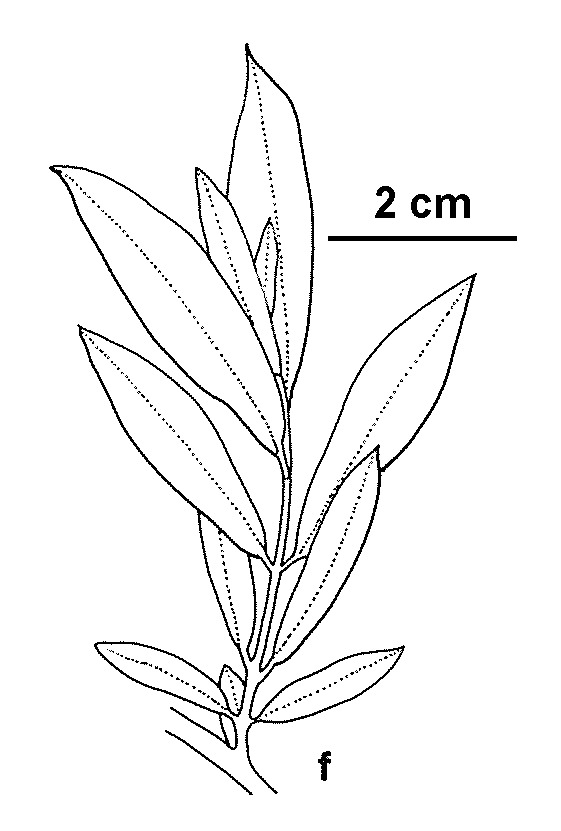Salix purpurea
L. Purple OsierShrub to 5 m high with numerous (to c. 100) densely clumped stems, typically very erect, crown ultimately widely spreading; bark smooth, pale grey-brown; twigs glabrous, very slender, often widely branching, often opposite or subopposite; buds glabrous, dark purplish-brown. Leaves often opposite or subopposite, linear, linear-lanceolate or oblanceolate, 2.5–11 cm long, 0.5–2 cm wide, soon glabrous, dull dark green above, somewhat paler beneath, thin-textured; base cuneate; apex acute; stipules very small, narrowly oblong-acute, mostly absent. Catkins male or female, appearing before leaves, sessile, cylindric, erect or suberect, often slightly curved, 1–4 cm long, males 6–7 mm wide, females 3–4 cm wide; catkin-scales 1–2 mm long, blackish-purple except at base; stamens 2, filaments united throughout; ovary hairy, 1–1.5 mm long. Capsule narrowly ovoid, 4–4.5 mm long. Flowers Sep.–Oct.
VRiv, HSF, HNF. Also naturalised NSW, Tas. Indigenous in Europe eastwards to Siberia, also northern Africa and central Asia to Japan. Naturalised in New Zealand, Canada, USA. Noted along stream-banks near Cann River and the Strathbogie Ranges where planted to a limited extent for erosion control, poorly collected but apparently rare in Victoria.
Vegetative reproduction is limited; abundant seed is set in some locations and populations are expected to expand.
Salix ×sordida A. Kern., a hybrid between S. purpurea and S. cinerea, is widespread in Europe (Meikle 1984) and could be expected in Victoria.
Carr, G.W. (1996). Salix. In: Walsh, N.G.; Entwisle, T.J., Flora of Victoria Vol. 3, Dicotyledons Winteraceae to Myrtaceae, pp. 387–398. Inkata Press, Melbourne.
 Spinning
Spinning

